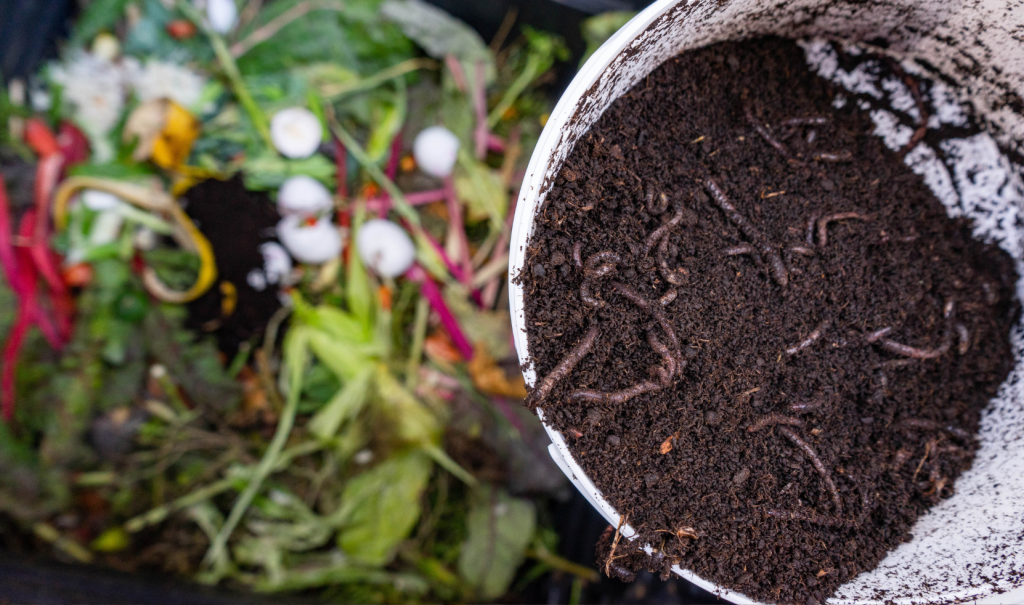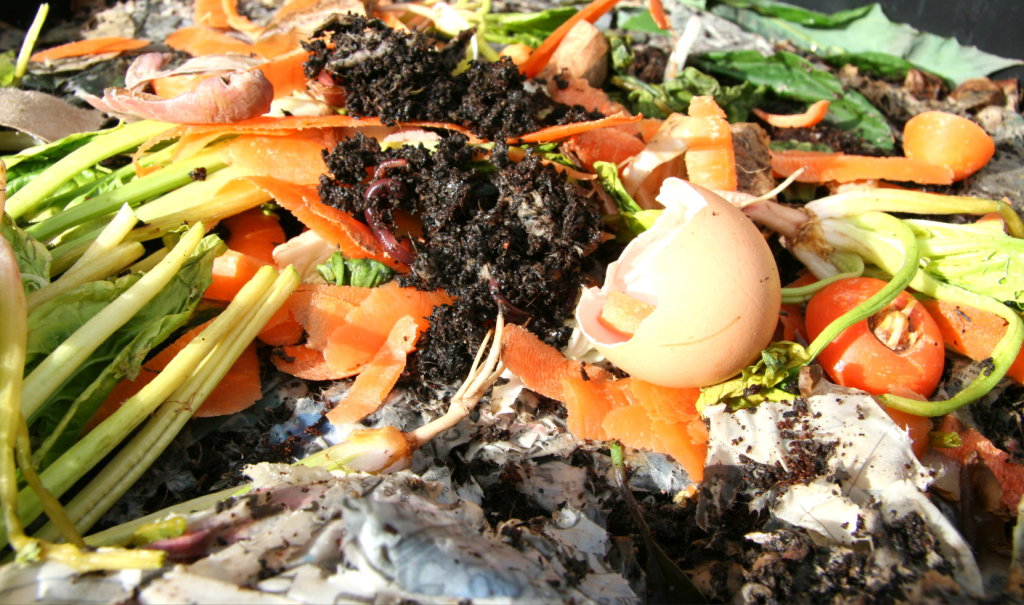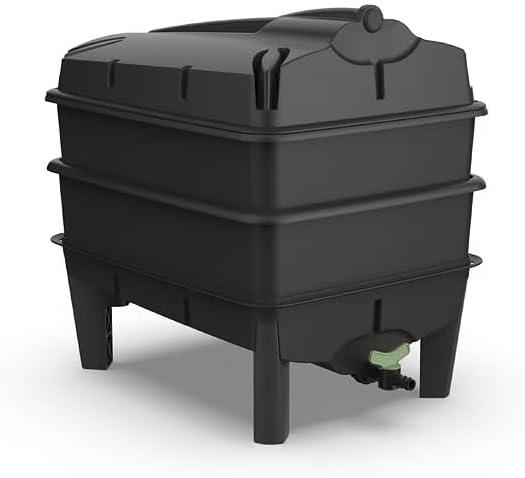Are you prepared to explore the realm of worm breeding? A worm breeding operation not aids in minimizing landfill waste. Also offers compost, for your garden. This detailed guide will take you through the process of establishing and caring for your worm farm.
Table of Contents
Introduction to Worm Farming
Worm farming offers a method to repurpose waste and create nutrient dense compost for your garden. Utilizing a worm bin allows you to decrease the waste that goes to landfills while also nourishing your plants. This guide outlines the steps to establish and care for a worm farm.

Step 1: Sourcing Your Worm Farm and Worms
Selecting the suitable worm farm is essential, for achieving your goals. The 2 Tray Tiger Wormery stands out as a choice crafted in the UK. With its design this compact setup enables composting making it ideal for use in both indoor and outdoor environments.
When searching for worms it’s best to look, for composting varieties like wigglers or tiger worms as they excel in vermiculture. Make sure to have enough worms to manage your waste effectively since they can eat roughly half their body weight in food each day.
Determining the Size of Your Worm Farm
When deciding on the size of your worm farm take into account the waste generated by your home. A 2 Tray Tiger Wormery is ideal for households of 1 to 2 people as each tray can hold about 15.5 liters. If your waste output is higher you might want to consider expanding your setup.
Step 2: Setting Up Your Worm Farm
Establishing your worm farm is an easy task. Just stick to the six simple steps outlined in the illustrated guide that comes with your Tiger Wormery. This guarantees that you’re fully prepared for a setup.
Materials Needed for Setup
- 2 sheets of newspaper
- A hessian cloth
- A large bowl or bucket
- Your worm farm (Tiger Wormery)
- Composting worms
- Cocoa fiber brick (coir block)
Creating the Perfect Environment for Your Worms
To set up a home for your worms start by soaking the cocoa fiber brick in water until it expands. Once its ready spread it out over the newspaper in the initial tray of your worm farm. Next place the worms on top and cover them with a worm blanket made from any piece of fabric to ensure their comfort.
Place your worm farm in a cool, shaded and dry spot keeping it sheltered from sunlight and freezing temperatures. This environment will be ideal for your worms enabling them to effectively decompose your waste.
Step 3: Feeding Your Worms
Feeding your worms is crucial, for keeping a thriving worm farm. While its important to feed them you should be mindful not to overdo it. Excessive feeding can result in odors and an unsuitable habitat, for your worms.
Begin by excavating a trench in the bedding and placing a small amount of food scraps. Then cover it with bedding and put the worm blanket back on top. Keep repeating this method by switching to a trench when necessary until you reach the end of the tray.

What to Feed Your Worms
Worms have a taste for food leftovers such as
- Raw and cooked vegetable scraps
- Coffee grounds
- Tea bags
- Small bits of paper and cardboard
There are specific things to steer clear of like:
- Dairy products
- Bread
- Meat
- Egg shells
Moreover it’s best to avoid giving your worms onions, garlic, raw potato skins and citrus peels because these can be harmful to them.
Moisture Levels
Keeping the moisture level in check is crucial, for the health of your worms. The bedding and food waste should have a texture similar to a sponge. If the surroundings get too dry your worms might halt their movement and eating habits which can impact the composting process.
Common Troubleshooting Tips
If your worms aren’t consuming their food it might indicate that you’re giving them too much. Take a look for bits before introducing more food. Keep in mind that worms can only eat than half of their weight in food daily.
To keep flies away make sure to cover food with the worm blanket and keep the worm farm securely closed to stop pests from getting in. If you smell odors check if you’re properly burying food and avoid adding anything that could create odors.
With the proper setup and maintenance your worm farm can flourish offering you top notch vermicompost and liquid fertilizer for your garden. The 2 Tray Tiger Wormery is specifically crafted to simplify this process and optimize efficiency guaranteeing a successful composting experience.
Maintaining Your Worm Farm
After getting your worm farm up and running the focus shifts to its upkeep to guarantee that your worms flourish and create top notch vermicompost. Routine inspections and tweaks are essential for maintaining operations.
Maintaining Moisture Levels
Keeping your worms moist is essential, for their well being. The bedding should have a texture similar to a sponge to allow for easy movement and feeding. If it dries out your worms might lose their appetite, slowing down the composting process.
To keep the moisture level in check you can spray the bedding with water if it feels dry. On the hand if it’s too damp you can mix in materials such as shredded newspaper or cardboard to soak up the moisture. By monitoring the bedding regularly you’ll be able to achieve that sweet spot.
Step 4: Troubleshooting Common Issues
Despite following practices you might come across obstacles in managing your worm farm. Here are a few problems you may face and suggestions on how to resolve them.
Identifying and Solving Problems
If your worms aren’t munching on their food it could be because you’re giving them too much. Before adding more check if there are any leftovers. Keep in mind that worms can eat about half their body weight in food daily. If you see food try cutting back on their portions.
Another problem that arises is the presence of odours. When your worm farm has an smell it usually stems from mishandling food. Make sure to cover scraps with bedding and avoid adding substances like dairy or meat that can lead to smells.
Pest Control and Odour Management
Bugs and insects can be bothersome. To keep them at bay make sure to cover your food with a worm blanket and securely fasten the lid. It’s also important to inspect for any gaps or openings that might let pests into your worm farm.
If you smell an odor it’s important to ensure that you’re feeding your pets correctly. Make sure to bury any food scraps, refrain from adding things and ensure good ventilation in the area to avoid any unpleasant smells.
Conclusion and Final Tips
Launching a worm farm can be a fulfilling endeavor that not only aids in the recycling of waste but also offers you nutrient compost for your plants. The 2 Tray Tiger Wormery presents a system tailored for achieving results.
Keep an eye on the moisture levels, give your worms the food and quickly address any problems that arise. With some care your worms will flourish and you’ll enjoy the rewards of eco friendly gardening.
Frequently Asked Questions
How often should I feed my worms?
Make sure to feed your worms on a basis but be careful not to give them too much. Before adding more food check if there’s any leftover. Try to give them just enough to eat within a week.
What can I do with the vermicompost produced?
The worm castings created by your worms serve as a natural fertilizer, for your garden. They boost soil quality promote plant development and contribute to soil well being.
Can I keep my worm farm indoors?
Indeed the Tiger Wormery is suitable for use indoors and outdoors. Just make sure to keep it in a cool, shaded spot away from sunlight and freezing temperatures.
How do I know when to harvest the compost?
Once the upper compartment is filled it’s time to collect the compost from the compartment. Just dump out the lower compartment and put it back on top to keep the process going.
Where can I buy composting worms?
You can purchase worms for composting at garden centers or through sellers. For optimal outcomes in your worm farm specifically seek out wigglers or tiger worms.


